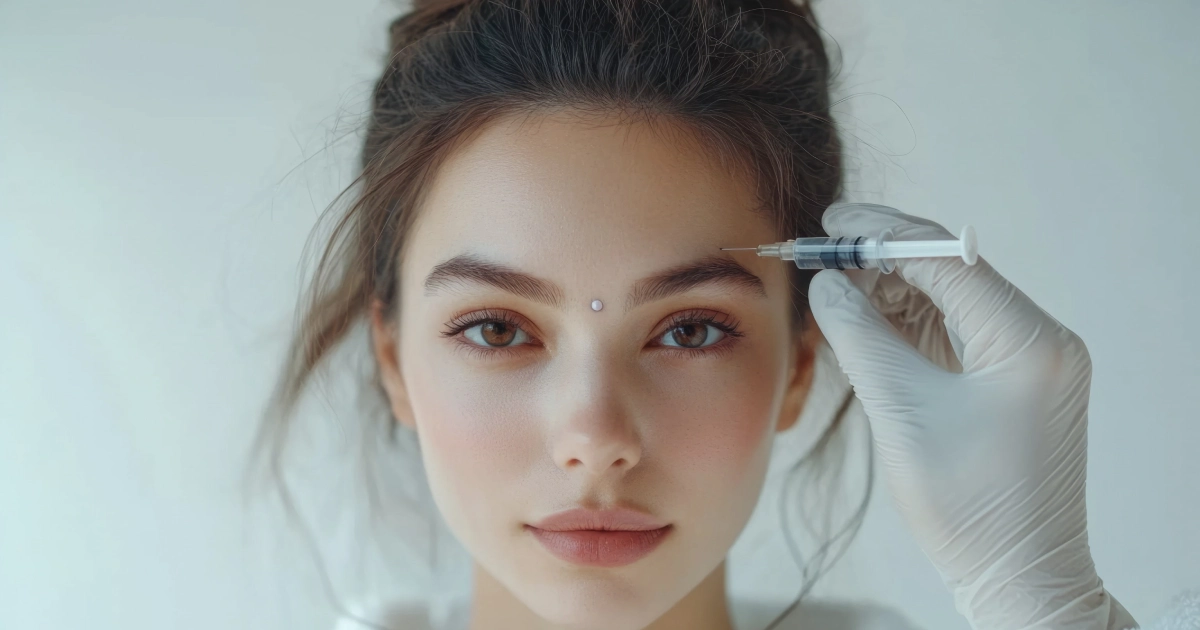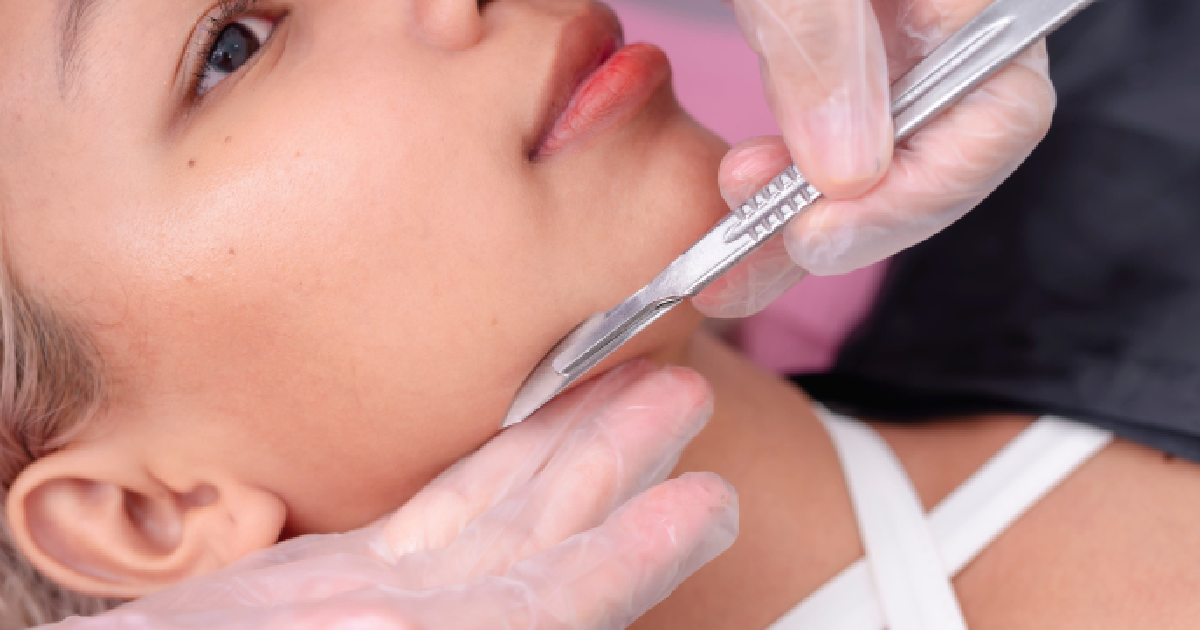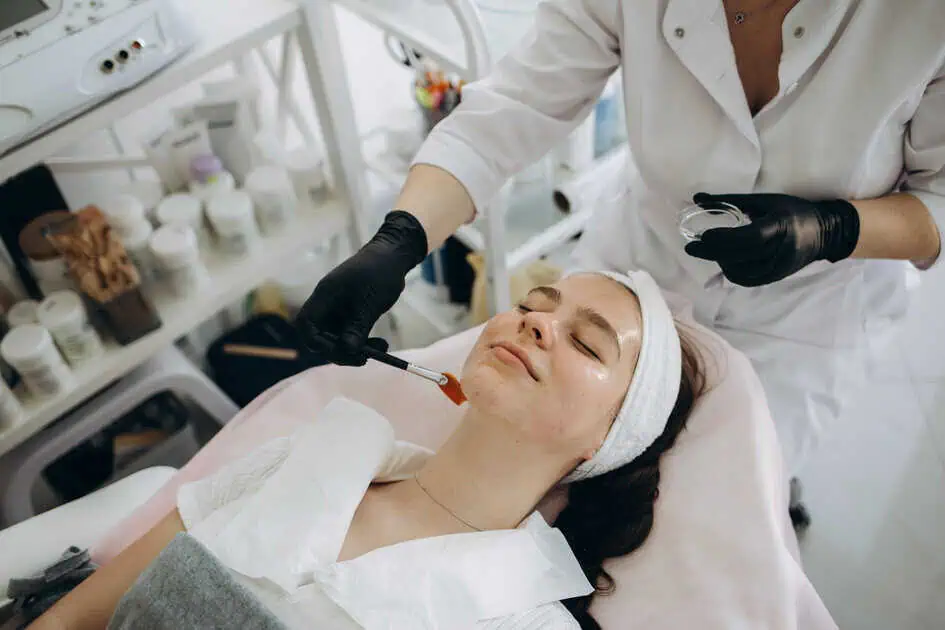Table of Contents
Wondering if those tiny needles are actually safe for your skin? Safety concerns are the top reason people hesitate to try microneedling, despite its impressive results for acne scars, wrinkles, and skin texture.
This guide examines the safety profile of microneedling, including the advanced PRF technique. It even outlines who should avoid the treatment and provides practical tips to ensure your experience is both safe and effective.
Armed with this information, you’ll be able to make a confident decision about whether microneedling is right for your skincare goals.
Understanding Microneedling
Microneedling is a dermatological treatment that uses a device equipped with fine needles that create controlled microinjuries in the skin. These micro-injuries trigger the body’s natural healing process, leading to increased collagen and elastin production.
Microneedling with PRF
A more advanced version of microneedling includes the use of Platelet-Rich Fibrin (PRF), which enhances the treatment’s rejuvenating effects. Microneedling with PRF involves drawing a small amount of the patient’s blood, processing it to extract the PRF, and applying it to the skin after microneedling.
A patient’s PRF contains a high concentration of growth factors. These may include white blood cells, and fibrin. All of these factors accelerate healing, stimulate collagen production, and improve skin regeneration. This combination treatment is particularly effective for addressing skin issues. These are fine lines, acne scars, and uneven skin tone while promoting a natural glow.
How Safe is Microneedling?
Microneedling is considered a safe cosmetic procedure once performed by a trained professional utilizing sterile equipment. Since it is a minimally invasive treatment, the risks are relatively low compared to surgical procedures.
The treatment does not involve the use of heat or harsh chemicals. This feature makes it a safer alternative for individuals with sensitive skin.
However, while microneedling is generally well-tolerated, safety depends on factors such as skin condition, practitioner expertise, and post-treatment care.
Minor side effects could be redness, mild swelling, and pinpoint bleeding. These are expected and typically resolve within a few days.
To ensure safety, it is crucial for microneedling patients to follow aftercare instructions.
Microneedling Contraindications
Before undergoing microneedling, it is essential to consult with a professional to ensure it is appropriate for your skin and overall health.
- Medical Concerns
- Bleeding disorders/blood thinners: Avoid if you have hemophilia or take anticoagulants (aspirin, heparin, warfarin). Stop blood-thinning supplements (fish oil, vitamin E, collagen) before treatment.
- Pregnancy/nursing: Postpone due to healing response risks and unpredictable results from hormonal changes.
- Compromised immune systems: Not recommended during chemotherapy, radiation, or high-dose steroid treatment.
- Skin Conditions
- Active infections: Don’t treat areas with acne, eczema, rashes, or open wounds.
- Systemic infections: Avoid with Hepatitis or HIV due to infection risk.
- Skin cancer: Not suitable for areas with skin cancer, keloids, warts, or deep scars.
- Other Considerations
- Allergies: Possible reactions to anesthetics, stainless steel, hyaluronic acid, and aftercare products.
- Treatment zones: Not safe for eyelids or mucosal membranes.
Targeted Effects of Microneedling with PRF
Microneedling for Acne Scars
Microneedling for acne scars is a popular and effective treatment. This effect stimulates collagen production, helping to smooth out depressed scars and improve overall skin texture.
By dealing with old scar tissue and encouraging new cell regeneration, microneedling reduces the visibility of acne scars over multiple sessions.
Microneedling for Wrinkles
Fine lines and wrinkles form as collagen levels decrease with age, leading to skin laxity and creases. Microneedling for wrinkles encourages collagen and elastin production.
This effect plumps the skin and gradually reduces the visibility of fine lines and wrinkles. Thus, patients may experience a more youthful complexion.
Microneedling for Hyperpigmentation
Microneedling for hyperpigmentation works by breaking up excess melanin. It is also effective in accelerating cell turnover. This microneedling benefit helps fade dark spots, sun damage, and melasma.
Over time, the treatment leads to a more even skin tone. This explains why microneedling is a great option for those struggling with pigmentation concerns.
Microneedling for Stretch Marks
Stretch marks result from rapid skin stretching, often due to weight fluctuations or pregnancy, leading to broken collagen fibers. Microneedling for stretch marks helps rebuild collagen and elastin in the affected areas. In turn, it reduces visibility of stretch marks and improves skin texture.
Benefits of Microneedling with PRF
Microneedling benefits extend beyond just improved skin appearance. Some of the key advantages of this treatment include:
- Enhanced Collagen Production: This process boosts skin elasticity, making it firmer and more youthful-looking over time. The increase in collagen also helps to repair damage from sun exposure and environmental stressors.
- Reduction in Acne Scars: Microneedling for acne scars is effective because the controlled injuries promote new skin cell regeneration, which diminishes the appearance of scars. Over multiple sessions, the skin becomes smoother and more even in tone.
- Minimization of Wrinkles and Fine Lines: As the body produces more collagen and elastin, microneedling for wrinkles reduces the depth of fine lines. This natural rejuvenation process leads to a fresher and more youthful complexion.
- Improvement in Hyperpigmentation: Microneedling for hyperpigmentation breaks up clusters of melanin, allowing for a more even skin tone. This is especially beneficial for individuals dealing with age spots, sun damage, or melasma.
- Smaller Pores: The increase in collagen helps tighten the skin, making pores appear smaller. This contributes to an overall refined and smoother complexion.
- Increased Absorption of Skincare Products: After microneedling, the skin becomes more receptive to serums and moisturizers, allowing them to penetrate deeper and work more effectively. This maximizes the benefits of hydrating and anti-aging ingredients.
- Safe for Most Skin Types: Unlike some laser treatments, microneedling is effective for a wide range of skin tones without the risk of hyperpigmentation. It is a versatile option for individuals seeking a non-invasive yet powerful skin-rejuvenation procedure.
How to Ensure a Safe Microneedling Experience
To maximize the microneedling benefits while minimizing risks, follow these safety guidelines:
1. Choose a Certified Professional
Microneedling should be performed by a licensed and experienced provider to ensure proper technique and hygiene. DIY microneedling or using at-home dermarollers can increase the risk of infection and skin damage.
2. Follow Proper Aftercare
After your microneedling session, your skin will be more sensitive. To promote healing and prevent complications:
- Avoid direct sun exposure and wear SPF 30+ sunscreen.
- Use gentle, hydrating skincare products and avoid harsh exfoliants.
- Avoid touching your face with unclean hands to prevent infection.
- Stay away from makeup for at least 24 hours to allow the skin to heal.
3. Be Mindful of Pre-existing Conditions
If you have a history of keloid scarring, skin infections, or an autoimmune condition, consult with a dermatologist before undergoing microneedling.
Potential Side Effects and Risks
While microneedling is generally safe, there are some potential side effects and risks that patients should be aware of. Common side effects include:
- Redness and Swelling: The treated area may appear slightly red and swollen for the first 24-48 hours post-procedure.
- Skin Sensitivity: The skin may feel more sensitive than usual, similar to a mild sunburn.
- Bruising and Minor Bleeding: Tiny pinpoint bleeding may occur during the procedure but typically subsides quickly.
- Risk of Infection: Although rare, infection can occur if post-care instructions are not followed properly.
- Hyperpigmentation or Hypopigmentation: Some patients, particularly those with darker skin tones, may experience temporary pigmentation changes.
Microneedling Aftercare Tips
Following proper microneedling aftercare can significantly minimize these risks and ensure a smooth recovery.
Proper aftercare is essential because it ensures the best results from microneedling. This step also helps to prevent complications.
Follow these tips for a smooth recovery:
- Keep the skin clean.
- Avoid direct sun exposure.
- Stay hydrated.
- Do not pick or scratch the skin.
- Avoid makeup and harsh skincare products for at least 48 hours post-treatment.
- Skip intense workouts and saunas for 24 – 48 hours.
- Follow your provider’s postcare instructions.
Quality Care Internal Medicine & Med Spa: Microneedling in Allen, TX
At Quality Care Internal Medicine & Med Spa, microneedling in Allen, TX, is performed using the latest technology, including microneedling with platelet-rich fibrin (PRF). This advanced technique enhances collagen production by combining microneedling with the regenerative properties of PRF derived from the patient’s blood.
Book your appointment to Learn More About Our Safe and Effective Microneedling Treatment.
Frequently Asked Questions
What is the difference between traditional microneedling and microneedling with PRF?
Traditional microneedling uses just needles to create micro-injuries while microneedling with PRF adds Platelet-Rich Fibrin derived from your own blood. PRF contains growth factors that accelerate healing, stimulate additional collagen production, and enhance regeneration.
How many sessions are typically needed to see results?
Most patients require 3-6 sessions spaced 4-6 weeks apart for optimal results. The exact number depends on your specific skin concerns. Acne scars and stretch marks often require more treatments than fine lines or general skin rejuvenation.
Is microneedling painful?
Most providers apply a topical numbing cream before treatment to minimize discomfort. Patients typically report feeling a mild prickling or scratching sensation during the microneedling portion.
When PRF is applied afterward, patients often describe a soothing sensation as the growth factors begin working on the microchannels created in the skin. The PRF component requires a small blood draw, which feels similar to a routine blood test.
How long is the downtime after a treatment?
Downtime is minimal, usually 24-48 hours of redness and mild swelling. Most patients can return to normal activities the next day, though makeup should be avoided for at least 24-48 hours. Complete healing typically occurs within 3-5 days.





